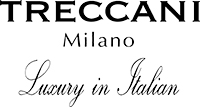Sea Island Cotton From Start to Finish: Where To Order Custom Dress Shirts in Toronto Posted on 22 Jul 16:46
 Sea island cotton (Gossypium barbadense) is native to South/Central America and has been domesticated as early as the 15th Century and today makes up only 0.0004% of the cotton industry.
Sea island cotton (Gossypium barbadense) is native to South/Central America and has been domesticated as early as the 15th Century and today makes up only 0.0004% of the cotton industry.
Sea Island cotton remains in its original home on small islands within the Caribbean. This proves the best as the cotton needs the sunshine, humidity and rain that are key ingredients to this type of cottons success which is why the Caribbean is the best fit.
Despite increased technology in farming equipment Sea Island cotton is still handpicked so as not to damage its high quality and texture. It is described as growing about the same height as the average human and its bulbs were said to pop open to “a palm-full of silken fiber so tough that thread from a pound of it was said to be able to stretch 160 miles”. Or so the legend goes.

The harvest of Sea Island cotton today remains as it has for many centuries. And the harvesting process reveals the exclusivity and high end nature of this cotton. The steps are as follows:
The first step is collection
These techniques, not divulged, are said to be handed down from generations long gone and must be expertly handled but also gentle so as not to disturb the plant
Next is Separation
-
The handlers weed out the soil, sand, leaves and stems

(Circa 1908, Cotton Spinning)
Then comes the examination.
-
The WISICA (West Indian Sea Island Cotton Association) has to check every pound of Sea Island Cotton to determine authenticity and quality
-
After approval it is sent out to be woven

There are few weavers/spinners left in the world that have the skill and delicacy to handle this cotton, one company has spinners in Switzerland that turn it into the most luxurious fabric. Sea Island cotton is also known to be found in places such as Italy strictly for combing and spinning into yarn, and then sent off to be made into all kinds of clothing. This cotton is special not only because it is rare but also its long lasting strength combined with its silky finish.

There is even a special way to clean and dry the cotton while still in the fields to produce just the right crop. “Cleaning times are special times to ensure a certain hand, and a certain roundness without using additional chemicals. The term "hand" refers to the smoothness of an item, the term "roundness" indicates the density of spinning.”
And can you believe that cotton was not given much attention until a real breakthrough came in 1951 when a seed was developed and introduced that produced an ELS cotton with superior fiber properties, luster and silkiness as well as an unusually high yield.
To compare the immensity of this cotton length below is a chart that classifies what is small and large and in between. Here you can see the chart states “extra long is over 37mm”, while sea island cotton has an average range of 48-52 mm.
Quick Facts:
- Queen Victoria commissioned her handkerchiefs to be made from it
- Originally the prized threads were shipped by the boatloads to London to be woven into ladies' undergarments before making their way into any other form of clothing
Images:
Girl and Cotton Machine From Led By Thread- Clothing Archive
Spun Cotton From Cotton Cloud's Talk
Two Cotton Tendrils From Eco Textiles
Chart Picture from Textile Exchange- The Farm Hub
Header Image from West Indian Sea Island Cotton
Sewing Shirt From A Continuous Lean
Information From:
Veitha Sea Island Cotton Information
Exclusive Cottons of the Caribbean-History
Beaufort Travel Information: History of Sea Island Cotton
The Post and Courier: History Regrown . . .
Treccani Milano BeSpoke Shirts & Blouses Service: more info click here

 Sea island cotton (Gossypium barbadense) is native to South/Central America and has been domesticated as early as the 15th Century and today makes up only 0.0004% of the cotton industry.
Sea island cotton (Gossypium barbadense) is native to South/Central America and has been domesticated as early as the 15th Century and today makes up only 0.0004% of the cotton industry.



